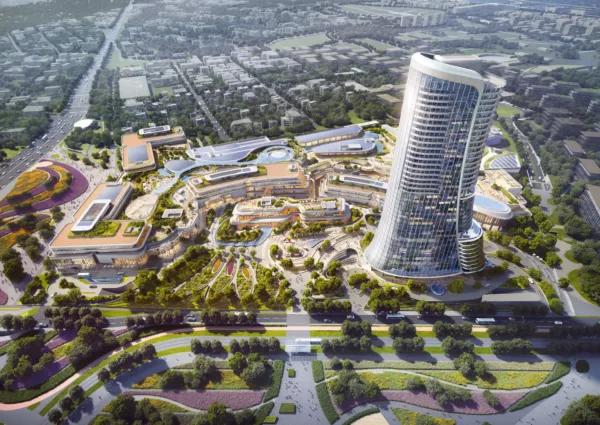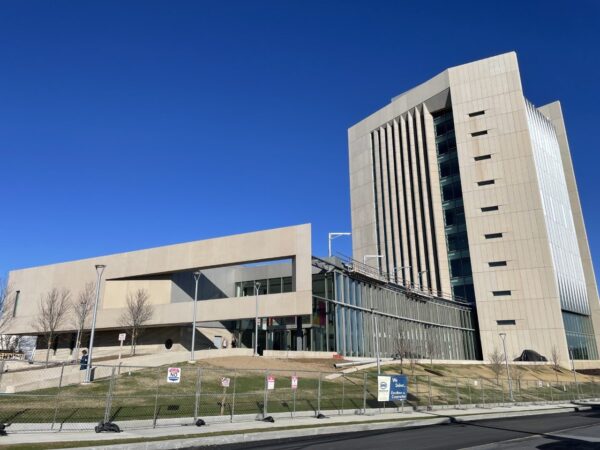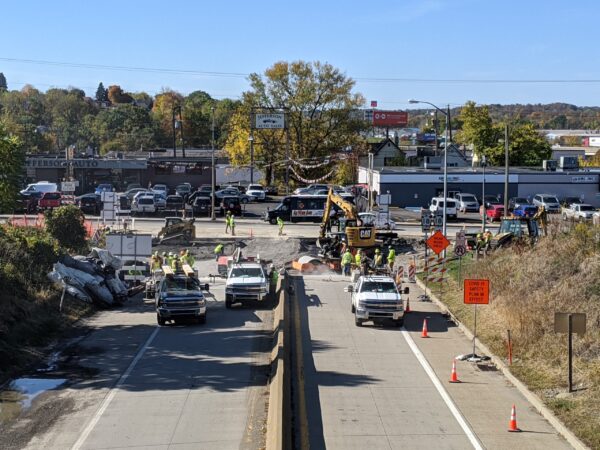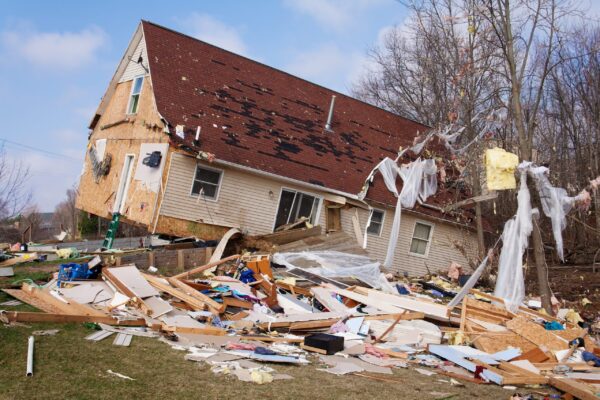

Hill is expanding its facilities management (FM) services to both existing and new clients globally. The expansion comes on the heels of a half-dozen new contracts in Europe and Northern Africa. Growth there, as well as growth in the Middle East, Asia, and Latin and North America, make Hill’s FM services a perfect fit, said Aidan Bradley, head of Hill’s FM initiative.
“Hill’s Facilities Management services provide clients with the same hands-on management they’ve come to expect from us and extends that conscientious attention to detail beyond the design and construction processes through commissioning, turnover and facility operation. We help guide clients through the design and construction processes, and then stay on to ensure that the building and its systems operate optimally for years to come,” Bradley explained.
Hill’s FM process commences at the very start of a project, connecting with clients and building relationships with installation contractors, project management teams, designers and manufacturers to ensure the building is fit for its ultimate purpose. This process continues through the construction phase and then helps to ensure a seamless transition to the vital yet often-overlooked facilities management phase.
“The journey and relationships built during the construction phase should not stop when construction is completed,” Bradley said. “Likewise, a good manager’s relationships are not confined to the project team. The mark of a truly successful project is one that is a collaboration of all stakeholders, including a building’s facilities managers and its end users.” Bradley described Hill’s FM services as the effective management of an organization, its buildings and assets.
“The facilities management role should be the driver for life-cycle cost analysis in project management services,” said Juan Manuel Vivar, project director for asset property and facility management at Hill’s Madrid office. With any large facility construction, every stage from concept to completion should be analyzed from the life cycle perspective, evaluating the cost of each of them over the life of the asset.
“At the end of the construction stage, nobody could better assist our clients on building maintenance or infrastructure management than us. If we get involved from the beginning of a project, we get a full understanding of the building and the client’s business expectations, both financial and technical,” Vivar said.
Hill’s FM teams recognize that the practice of day-to-day facilities maintenance often is far different than theory, and that core maintenance can be pre-planned or reactive. “Planned Preventive Maintenance, or PPM, is best described as an activity required on a regular basis aimed at plant and equipment that needs to be maintained to ensure correct, efficient operation or is driven by legislation or statutory requirements,” Bradley said. “In contrast, reactive maintenance is associated with ad-hoc repairs necessitated by inoperable or inefficient equipment, often the result of breakdown, misuse, abuse or general wear and tear.”
Hill’s FM services are tailored to each client and their specific needs, financial constraints and other considerations, and help keep clients’ facilities compliant with local requirements and regulations.
The Models
“The strategy adopted for FM is of paramount importance,” Bradley said. Hill offers several options.” An ‘In-House Delivery,’ focused on the on-site provision of an internal helpdesk and experienced technicians, is typically suited to smaller sites or those with low levels of activity. “Under In-House Delivery, Hill’s internal technicians foster and develop relationships and encourage collaboration with the client and the building’s occupants,” Bradley said. Hill’s In-House Delivery staff work with existing facilities staff to improve efficiency and productivity and trim costs while maximizing usage.
Hill’s ‘In-House Helpdesk’ can provide an essential level of support and control through integration with a Computer Aided Facilities Management (CAFM) system. Hill’s In-House Helpdesk improves the level of customer service and real-time information reporting, so building owners have the most timely information possible.
“Alternately, we can provide clients with direct access to our CAFM system, eliminating the need for an in-house helpdesk,” Bradley said. Under Hill’s ‘Partial In-House Delivery,’ most appropriate to high- activity environments, the use of CAFM allows for synergy between a technician’s activities and the client’s building requirements, ensuring that any work is both carefully planned and recorded, Bradley added.
“There is also the option of ‘Total Outsourcing’ utilizing external resources, which is managed by an external helpdesk. “This is best suited to an estate where the geographical spread of facilities does not warrant the costs of a directly employed workforce,” Bradley said. “Our Total Outsourcing is mostly coupled with an external helpdesk managing and controlling activities via contracted specialists.”
Yet another FM model is ‘Partial Outsourcing,’ which is ideally suited to medium-sized clients who can justify the costs associated with an internal helpdesk, but who are not large enough to directly employ technical expertise to satisfy the requirements. “A ‘Partial Outsourcing (No Helpdesk)’ model of FM is also available, which is suited to organisations that wish to relinquish control of the maintenance activities to individual property personnel.”
Hill’s CAFM Solution
Admittedly, there is “no one model” that fits all, Bradley said. “Careful consideration should be given to the complexity of a facility, its purpose, the client’s requirements, and the installed equipment maintenance requirements and budgeted costs. “Hill has selected Ostara Systems as its recommended CAFM solution for FM contracts. Ostara is built on 15 years of FM experience, and offers hosted, web-based systems that constantly evolve to offer the most comprehensive, up-to-date information possible, coalescing the latest industry requirements, client demands and market trends.
“Our relationship with Ostara is a thriving one,” Bradley said. “Using a world-class software system to manage maintenance activities is essential to ensuring that a facility is well maintained at all times, and that the maintenance meets both the client’s demands and our rigorous adherence to the three pillars of FM: cost, quality/performance and safety.”
The CAFM Process
Once CAFM is populated by Hill FM and Ostara Systems with the asset register, the next step is to decide who maintains the assets and the frequency. “Some assets will require a more rigorous maintenance regime than others, weekly, monthly, quarterly, or yearly for example,” Bradley explained. “Those assets that require maintenance certification are tracked to ensure the building remains compliant at all times. In addition, all assets are maintained in accordance with the manufacturer’s recommendations and per the owners’ and occupants’ specifications.”
“While the regimes will vary according to location and climate, this accurate recording of work undertaken and the associated costs results in realistic budgets that can be aligned to ensure that the building remains compliant and fully functional,” Bradley continued. “Such tracking becomes even more important when you realize that each building has its own specific requirements. No two buildings will ever be the same, and will demand differing levels of maintenance activity. The CAFM Ostara system makes tracking among disparate buildings easy.”
FM at Work
In Spain, Hill’s Facilities Management services have been embraced by clients in the healthcare, transportation and commercial sectors. “Hill has been delivering facilities management services for more than seven years now, and has had much success,” Vivar said. “Hill’s global reach and 40 years of experience in managing some of the world’s most complex projects has enabled us to develop proven methods and systems for managing a building long after construction is completed.
Bradley agreed. “It’s a natural progression. We can manage the building’s design and construction, and then stay on to ensure that the building reaches its true potential, and that its day-to-day use reflects the original intent.”
Share

April 11, 2024 | Articles
A Model Move: Managing Move-In at the Sylvia H. Rambo U.S. Courthouse

April 8, 2024 | Articles

April 4, 2024 | Articles
Driving Growth and Seizing Opportunity: Lukasz Marcinkiewicz Joins Hill as Country Manager, Poland

April 1, 2024 | Articles

March 27, 2024 | Articles
Building the Future: Women’s Leadership and Community Engagement in the Construction Industry

March 25, 2024 | Articles
Leveraging Data Analytics and Dashboards for Enhanced Project Performance

February 26, 2024 | Articles
Continuity, Creativity, and Collaboration: Delivering PennDOT’s Route 18 Signal Upgrade
We and use cookies and other tracking technologies to improve your experience on our website. We may store and/or access information on a device and process personal data, such as your IP address and browsing data, for personalised advertising and content, advertising and content measurement, audience research and services development. Additionally, we may utilize precise geolocation data and identification through device scanning.
Please note that your consent will be valid across all our subdomains. You can change or withdraw your consent at any time by clicking the “Consent Preferences” button at the bottom of your screen. We respect your choices and are committed to providing you with a transparent and secure browsing experience.
| Cookie | Duration | Description |
|---|---|---|
| cookielawinfo-checbox-analytics | 11 months | This cookie is set by GDPR Cookie Consent plugin. The cookie is used to store the user consent for the cookies in the category "Analytics". |
| cookielawinfo-checbox-functional | 11 months | The cookie is set by GDPR cookie consent to record the user consent for the cookies in the category "Functional". |
| cookielawinfo-checbox-others | 11 months | This cookie is set by GDPR Cookie Consent plugin. The cookie is used to store the user consent for the cookies in the category "Other. |
| cookielawinfo-checkbox-necessary | 11 months | This cookie is set by GDPR Cookie Consent plugin. The cookies is used to store the user consent for the cookies in the category "Necessary". |
| cookielawinfo-checkbox-performance | 11 months | This cookie is set by GDPR Cookie Consent plugin. The cookie is used to store the user consent for the cookies in the category "Performance". |
| viewed_cookie_policy | 11 months | The cookie is set by the GDPR Cookie Consent plugin and is used to store whether or not user has consented to the use of cookies. It does not store any personal data. |


